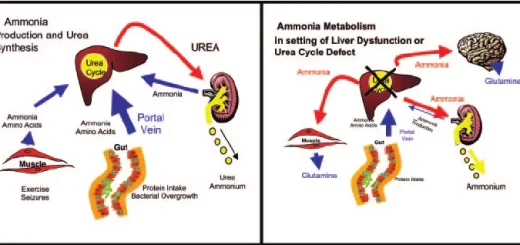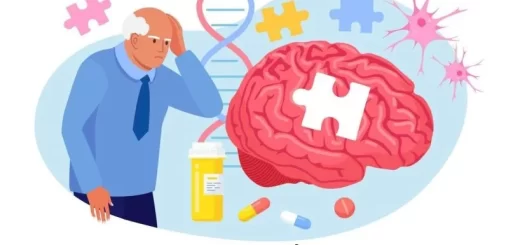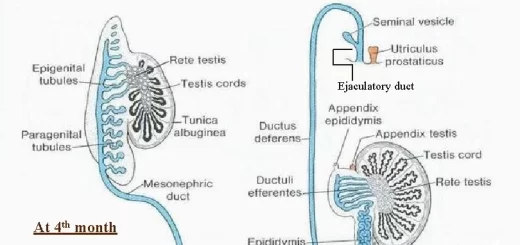Medial compartment of thigh muscles, Growth and regeneration of smooth muscle fibers
The obturator nerve arises from the lumbar plexus (L2,3, and 4) and emerges on the medial border of the psoas muscle within the abdomen. It runs forward on the lateral wall of the pelvis to reach the upper part of the obturator foramen, where it divides into anterior and posterior divisions.
The anterior division
It supplies: gracilis, adductor longus, adductor brevis, and pectineus (occasionally; articular branch to hip joint; subsartorial plexus; the skin of the medial side of the thigh.
The posterior divisions
It terminates by supplying the knee joint. It supplies muscular branches to the obturator externus, adductor portion of adductor Magnus and adductor brevis.
Medial compartment of the thigh muscles
Adductor longus:
- Origin: Body of pubis.
- Insertion: Middle third of linea aspera of femur.
- Nerve supply: Obturator nerve.
- Action: Adduction of thigh at the hip joint.
Adductor brevis:
- Origin: Body and inferior ramus of the pubis.
- Insertion: Pectineal line and proximal part of linea aspera of femur.
- Nerve supply: Obturator nerve.
- Action: Adduction of the thigh at the hip joint.
Adductor Magnus:
- Origin: Adductor part: ischiopubic ramus. Hamstring part ischial tuberosity.
- Insertion: Adductor part: Posterior surface of the proximal femur, linea aspera, medial supracondylar line. Hamstring part: Adductor tubercle.
- Nerve supply: Adductor part: obturator nerve. Hamstring part: tibial part of the sciatic nerve.
- Action: Adductor part: Adduction and flexion of the thigh. Hamstring part: extends thigh.
Gracilis:
- Origin: Body and inferior ramus of the pubis.
- Insertion: Superior part of the medial surface of the tibia.
- Nerve supply: Obturator nerve.
- Action: Adducts thigh at the hip, flexes leg at the knee, and helps to rotate it medially.
Obturator externus:
- Origin: Margins of obturator foramen and obturator membrane.
- Insertion: Trochanteric fossa of femur.
- Nerve supply: Obturator nerve.
- Action: Lateral rotation of the thigh.
Adductor (Subsartorial) canal
The adductor canal is an intermuscular cleft situated on the medial aspect of the middle third of the thigh beneath the sartorius. It begins above at the apex of the femoral triangle and ends below at the opening in the adductor Magnus. In cross-section, it is triangular.
- The anteromedial wall is formed by the sartorius muscle and fascia.
- The posterior wall is formed by the adductor longus and Magnus.
- The lateral wall is formed by the vastus medialis.
The adductor canal contains the terminal part of the femoral artery, the femoral vein, the deep lymph vessels, the saphenous nerve, the nerve to the vastus medialis, and the terminal part of the obturator nerve.
Smooth muscles
Smooth muscles are unstriated involuntary muscles.
Site and characters
- The smooth muscular tissue is widely spread in the body, forming the involuntary musculature of the viscera and blood vessels. It thus participates in the regulation of digestive, respiratory, and circulatory functions.
- The smooth muscle fibers or leiomyocytes can be regulated by many stimuli e.g. nervous & hormonal.
- In addition to contractile activity, smooth muscle fibers can synthesize collagen, elastin, and proteoglycans of the extracellular matrix similar to fibroblasts.
Histological structure of smooth muscle fibers
Light microscopic appearance:
- Connective tissue component, smooth muscle fibers are arranged into bundles surrounded by connective tissue collagen and elastic fibers. In each bundle, smooth muscle fibers are grouped very close together and fine reticular network surrounds individual muscle fiber in the bundle.
- Smooth muscle fibers vary greatly in size ranging from 20um long in small blood vessels to 500 um long in the pregnant uterus.
On examination of the longitudinal section:
The smooth muscle fibers are elongated fusiform, unstriated cells. each muscle fiber has a single oval and centrally-located nucleus. The sarcoplasm is abundant, eosinophilic, and relatively homogeneous. The smooth muscle fibers are organized in a way that the broad middle portion of one fiber is usually located at the same level of the narrow tapering portion of the adjacent fiber.
On examination of cross-section:
Smooth muscle fibers are cut at different levels in the same bundle. Thus, they appear more or less rounded and unequal in size. The fibers cut in their middle thick portion are larger and contain a central nucleus. The fibers cut in their peripheral portion appear smaller and without a nucleus.
Electron microscopic appearance:
The smooth muscle fiber is elongated, fusiform, and contains a single central nucleus. The sarcoplasm is filled with myofilaments. The other organelles are present mainly at the two poles of the nucleus.
1 – The myofilaments
- Thick and thin myofilaments are present in the smooth muscle fiber; however, the proportion of actin to myosin is greater than in striated muscle.
- The myofilaments are not organized in parallel myofibrils and not arranged in sarcomeres.
- The myofilaments are grouped in bundles with an oblique orientation to the long axis of the cell.
- Thick myofilaments are formed of myosin as in a striated muscle.
- Thin myofilaments are formed of actin filaments associated with tropomyosin filaments; however, they lack troponin complexes.
- The thin myofilaments are attached with one end to the dense bodies while the other end is free interdigitating with the thick myofilaments. The dense bodies are fusiform densities consisting of alpha-actinin, scattered in the sarcoplasm (sarcoplasmic dense bodies) or subsarcolemmal.
2 – Caveolae
The sarcolemma of the smooth muscle fiber shows many vesicular invaginations or caveolae. They are regarded as the possible counterparts of the T tubules which are absent in smooth muscle fibers.
3 – Sarcoplasmic reticulum
The sarcoplasmic reticulum is poorly developed and consists of narrow sarcotubules that are often associated with the caveolae.
4 – Other cytoplasmic constituents
They are mainly located at the poles of the nucleus. They include mitochondria, Golgi complex, centrioles, few cisternae of rough endoplasmic reticulum, and ribosomes. Some glycogen granules and occasional fat droplets are also found.
5 – Gap junctions (nexuses)
Adjacent smooth muscle fibers are linked by gap junctions that facilitate the transmission of impulses for contraction from one smooth muscle fiber to another.
Growth of skeletal muscle
The skeletal muscle fibers cannot divide. Increased muscle mass is due to the enlargement of existing muscle fibers (hypertrophy). This occurs by:
- Increasing the width of the fibers is due to the synthesis of new myofibrils. The width reached depends on the amount of exercise.
- Increasing the length of the fibers is due to the activation of satellite cells. They are mononucleated cells located between the skeletal muscle fibers and their surrounding basal laminae. When activated, satellite cells are transformed into the myoblasts that fuse with the skeletal muscle fibers.
Regeneration
The regeneration of skeletal muscle fibers is also carried by satellite cells that have regenerative potential. After the injury of the skeletal muscle fiber, the necrotic areas are removed by macrophages (phagocytosis). Then the satellite cells provide the newly formed part to replace the degenerated part of the muscle fiber. However, the regenerative potential of satellite cells is limited. A severe lesion will transform muscular tissue into fibrous scar tissue (fibrosis).
Growth and regeneration of smooth muscle fibers
- Like skeletal and cardiac muscle fibers, smooth muscle fibers respond to the increased demands by undergoing compensatory hypertrophy (increase in size) & also hyperplasia (increase in number).
- They have the ability for mitotic division thus providing new smooth muscle cells.
- Therefore, compared to skeletal and cardiac muscles, smooth muscles have a greater capacity for regeneration.
Excitability changes in skeletal muscle fibers during activity & Causes of muscle fatigue
Neuro-Muscular Junction properties, Functions & types of skeletal muscles
Muscles types, Skeletal muscle parts, Lymphatic system structure & function
Muscular system, Structure of skeletal muscle, Muscles properties & functions
Muscular tissue types, function, structure, definition & anatomy



